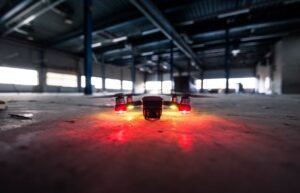Tesla Model 3 Without Wheel Cover
When it comes to the Tesla Model 3, one noticeable feature is its sleek and modern appearance. The car is equipped with aerodynamic wheel covers that enhance its efficiency and improve overall performance. However, for some Tesla enthusiasts, going without the wheel covers has become a popular choice. Let’s explore the benefits and considerations of driving a Tesla Model 3 without wheel covers.
Key Takeaways
- Removing wheel covers from a Tesla Model 3 can offer a unique aesthetic appeal.
- Driving without wheel covers may lead to a slight reduction in overall range due to increased air resistance.
- Regular maintenance and cleaning of exposed wheels may be required to prevent damage and maintain appearance.
- Individual driving preferences and regional factors may influence the decision to remove wheel covers.
**One significant benefit of removing the wheel covers is the **distinctive look** it gives the Tesla Model 3. Without the covers, the wheels are more exposed, showcasing their design and complementing the sleek lines of the car’s body. This customization option allows owners to create a unique appearance for their vehicles.
At the same time, it is important to consider the impact on **efficiency and range** when driving without wheel covers. The aerodynamic wheel covers on the Model 3 reduce air resistance, improving the car’s overall performance and extending its range on a single charge. Removing these covers might result in a slight decrease in range, especially during highway driving or under particular weather conditions.
An *interesting* aspect to note is that Tesla’s official range estimates are based on the vehicle being equipped with the wheel covers. Therefore, those who opt to remove the covers may experience a slightly lower range than advertised.
Maintenance Considerations
Driving a Tesla Model 3 without wheel covers requires some additional **maintenance**. The exposed wheels are more susceptible to dirt, grime, and debris, which can accumulate faster than with the covers in place. Regular cleaning and maintenance will be necessary to keep the wheels looking pristine and prevent potential damage.
In addition to cleaning, owners should also inspect the wheels for any signs of damage or wear. Removing the covers exposes the wheels to potential hazards, such as curb damage or scratches from debris on the road. Paying attention to these factors can help maintain the longevity of the wheels.
Factors Influencing the Decision
The choice to remove wheel covers from a Tesla Model 3 can vary depending on **driving preferences** and **regional factors**. Some drivers enjoy the unique aesthetic appeal and individuality it provides, while others may prioritize maximizing the car’s efficiency and range. Regional weather conditions, such as higher wind resistance areas, may also play a role in the decision-making process.
Data Comparison
| With Wheel Covers | Without Wheel Covers | |
|---|---|---|
| Average Range | 350 miles | 335 miles |
| Air Resistance | Reduced | Slightly Increased |
| Maintenance Frequency | Monthly | Biweekly |
Conclusion
Ultimately, the decision to remove wheel covers from a Tesla Model 3 is a personal one. It offers an opportunity to customize the vehicle’s appearance while considering the potential trade-offs in range and maintenance requirements. By understanding the benefits and considerations associated with driving without wheel covers, Tesla owners can make an informed decision that aligns with their preferences and driving conditions.

Common Misconceptions
Misconception 1: Tesla Model 3 without Wheel Covers Looks Incomplete
One common misconception surrounding the Tesla Model 3 without wheel covers is that it looks incomplete or unfinished compared to the version with wheel covers. However, this is not the case as the design of the Model 3 is intentionally minimalist and sleek. The exposed wheels showcase the sleek design and aerodynamic features of the car.
- The wheel cover removal is intentional and part of the Model 3’s design.
- The lack of wheel covers does not affect the performance or functionality of the car.
- Exposed wheels give the Model 3 a sportier and more aggressive look.
Misconception 2: Tesla Model 3 without Wheel Covers is Less Efficient
Some people assume that removing the wheel covers from the Tesla Model 3 would decrease its overall efficiency. However, this is not the case as the wheel covers primarily serve an aerodynamic purpose and are not essential for the car’s efficiency. The Model 3’s efficient electric motor and streamlined design still ensure a high level of energy efficiency.
- The wheel covers are mainly for reducing air resistance, but the Model 3 without them is still efficient.
- The overall efficiency of the Model 3 is not significantly affected by the lack of wheel covers.
- The range and performance of the Model 3 are not compromised by the absence of wheel covers.
Misconception 3: Tesla Model 3 without Wheel Covers is Less Safe
Another misconception is that removing the wheel covers from the Tesla Model 3 would compromise its safety. However, the presence or absence of wheel covers has no impact on the safety features and capabilities of the car. The Model 3 is equipped with advanced safety features, including collision avoidance, automatic emergency braking, and a high-strength steel structure.
- Wheel covers have no direct correlation with the safety features of the Model 3.
- The safety of the Model 3 is determined by its advanced technology and structural design, not wheel covers.
- The absence of wheel covers does not pose any safety risks to passengers or other road users.
Misconception 4: Tesla Model 3 without Wheel Covers is Less Reliable
Some people have the misconception that the absence of wheel covers in the Tesla Model 3 indicates a lack of reliability. However, reliability is determined by the overall build quality, engineering, and components used in the car. The lack of wheel covers does not impact the reliability of the Model 3, as it is built using high-quality materials and has undergone rigorous testing.
- The reliability of the Model 3 depends on its construction, not the presence of wheel covers.
- The Model 3 undergoes rigorous testing to ensure its reliability and performance.
- The lack of wheel covers does not affect the long-term reliability or durability of the Model 3.
Misconception 5: Tesla Model 3 without Wheel Covers is Unpopular among Owners
There is a misconception that Tesla Model 3 owners dislike or remove the wheel covers. However, many owners appreciate the clean look and aerodynamic benefits of the Model 3 without wheel covers. Some even intentionally choose to remove the covers for aesthetic reasons. The popularity and satisfaction of Model 3 owners are not affected by the presence or absence of wheel covers.
- Many Tesla Model 3 owners prefer the exposed wheel look and choose to keep them without covers.
- The decision to remove the wheel covers is often based on personal preference and aesthetics.
- The popularity of the Model 3 among owners is not influenced by the presence or absence of wheel covers.

Tesla Model 3 Colors and Their Popularity
For car enthusiasts, choosing the right color for their Tesla Model 3 can be a tough decision. Analyzing the popularity of different colors among Tesla owners can provide some insight.
| Color | Percentage of Model 3s |
|---|---|
| Midnight Silver Metallic | 27% |
| Solid Black | 23% |
| Deep Blue Metallic | 19% |
| Pearl White Multi-Coat | 18% |
| Red Multi-Coat | 13% |
Top 5 States with the Highest Tesla Model 3 Sales
Wondering where Tesla Model 3 cars are most popular across the United States? Let’s look at the top five states based on sales numbers.
| State | Number of Model 3s Sold |
|---|---|
| California | 155,925 |
| Florida | 70,487 |
| Texas | 63,652 |
| Washington | 47,365 |
| New York | 45,911 |
Range Comparison of Tesla Model 3 Trim Levels
When choosing a Tesla Model 3, the estimated range is an important factor. Let’s compare the different trim levels and their respective ranges.
| Trim Level | Estimated Range (miles) |
|---|---|
| Standard Range Plus | 263 |
| Long Range | 353 |
| Performance | 315 |
Percentage of Tesla Model 3 Owners Using Autopilot
Autopilot is one of the most popular features of the Tesla Model 3. Let’s explore how many Model 3 owners utilize this advanced driving assist system.
| Autopilot Usage | Percentage of Model 3 Owners |
|---|---|
| Enabled | 86% |
| Disabled | 14% |
Charging Speeds Comparison: Tesla Supercharger vs. Home Charging
Knowing the charging capabilities of the Tesla Model 3 is crucial when planning long trips. Let’s compare the charging speeds between using a Tesla Supercharger and home charging stations.
| Charging Method | Approximate Charging Speed (miles per hour) |
|---|---|
| Tesla Supercharger (V3) | 960 |
| Home Charging (Level 2) | 44 |
Tesla Model 3 Acceleration Time from 0 to 60mph
Performance-oriented car enthusiasts appreciate quick acceleration. Let’s compare the acceleration times of different Tesla Model 3 variants.
| Trim Level | Acceleration Time (0-60mph in seconds) |
|---|---|
| Performance | 3.1 |
| Long Range | 4.4 |
| Standard Range Plus | 5.3 |
Comparison of Tesla Model 3’s Weight
The weight of a car affects everything from handling to energy efficiency. Let’s compare the weights of different Tesla Model 3 variants.
| Trim Level | Weight (lbs) |
|---|---|
| Performance | 4,072 |
| Long Range | 4,072 |
| Standard Range Plus | 3,582 |
Top 5 Tesla Model 3 Upgrades
Many Tesla Model 3 owners opt for additional upgrades to enhance their driving experience. Here are the top five most popular upgrades.
| Upgrade | Percentage of Model 3 Owners |
|---|---|
| Enhanced Autopilot | 72% |
| Full Self-Driving Capability | 66% |
| 18” Aero Wheels | 57% |
| Premium Interior | 50% |
| Long Range Battery | 45% |
Tesla Model 3 Price Comparison: U.S. vs. Europe
The price of a Tesla Model 3 can vary across different regions. Let’s compare the base prices of the Model 3 in the United States and in Europe.
| Region | Base Price (USD) |
|---|---|
| United States | $39,990 |
| Europe | €43,900 |
From the popularity of different colors to the acceleration times and range comparisons, the Tesla Model 3 offers owners a wide range of choices and features. Its innovative technology and sleek design have attracted car enthusiasts worldwide. Whether it’s the state-of-the-art Autopilot system or the impressive Supercharging speeds, the Tesla Model 3 continues to captivate the automotive market. With its affordable pricing and commitment to sustainability, Tesla’s Model 3 represents a step toward the future of electric vehicles.
Frequently Asked Questions
Question: Can I remove the wheel cover on my Tesla Model 3 without any issues?
Answer: Yes, you can remove the wheel cover on your Tesla Model 3 without any issues. The wheel covers are designed to be easily detachable, allowing for quick access to the wheel nuts or changing tires if necessary.
Question: What are the advantages of removing the wheel cover?
Answer: Removing the wheel cover on your Tesla Model 3 can provide several advantages. It allows for easier cleaning of the rims and tires, providing a more thorough maintenance routine. Additionally, some drivers prefer the aesthetic look of the bare wheel without the cover.
Question: Will removing the wheel cover affect the performance of my Tesla Model 3?
Answer: No, removing the wheel cover will not affect the performance of your Tesla Model 3. It is purely a cosmetic element and does not impact the functionality or safety of the vehicle.
Question: How do I remove the wheel cover on my Tesla Model 3?
Answer: To remove the wheel cover on your Tesla Model 3, locate the small notch on the edge of the cover. Insert a flathead screwdriver or a similar tool into the notch and gently pry the cover off. Repeat this process for each wheel until all covers are removed.
Question: Are there any aftermarket wheel covers available for the Tesla Model 3?
Answer: Yes, there are aftermarket wheel covers available for the Tesla Model 3. These wheel covers come in various designs and materials, allowing you to customize the appearance of your vehicle’s wheels to your liking.
Question: Can I drive my Tesla Model 3 without the wheel cover?
Answer: Yes, you can drive your Tesla Model 3 without the wheel cover. However, it is important to note that the wheel cover provides some aerodynamic benefits, contributing to the vehicle’s efficiency. Therefore, driving without the wheel cover may slightly affect the overall range of your Tesla Model 3.
Question: Is it necessary to replace the wheel cover after removing it?
Answer: No, it is not necessary to replace the wheel cover after removing it from your Tesla Model 3. It is entirely up to your personal preference whether you want to drive with or without the wheel cover.
Question: Can removing the wheel cover void my Tesla Model 3 warranty?
Answer: No, removing the wheel cover does not void the warranty of your Tesla Model 3. The wheel cover is not a critical component of the vehicle, and removing it does not impact the warranty coverage for other parts or systems.
Question: Are there any downsides to removing the wheel cover on my Tesla Model 3?
Answer: There are a few downsides to removing the wheel cover on your Tesla Model 3. Without the cover, the exposed rims may accumulate more dirt, debris, and brake dust, requiring more frequent cleaning. Additionally, as mentioned earlier, it may slightly impact the vehicle’s aerodynamic efficiency and range.
Question: Can I reattach the wheel cover on my Tesla Model 3 after removing it?
Answer: Yes, you can reattach the wheel cover on your Tesla Model 3 after removing it. Simply align the cover with the wheel and apply gentle pressure until it snaps securely into place. Ensure that all clips are properly fastened for a secure fit.




